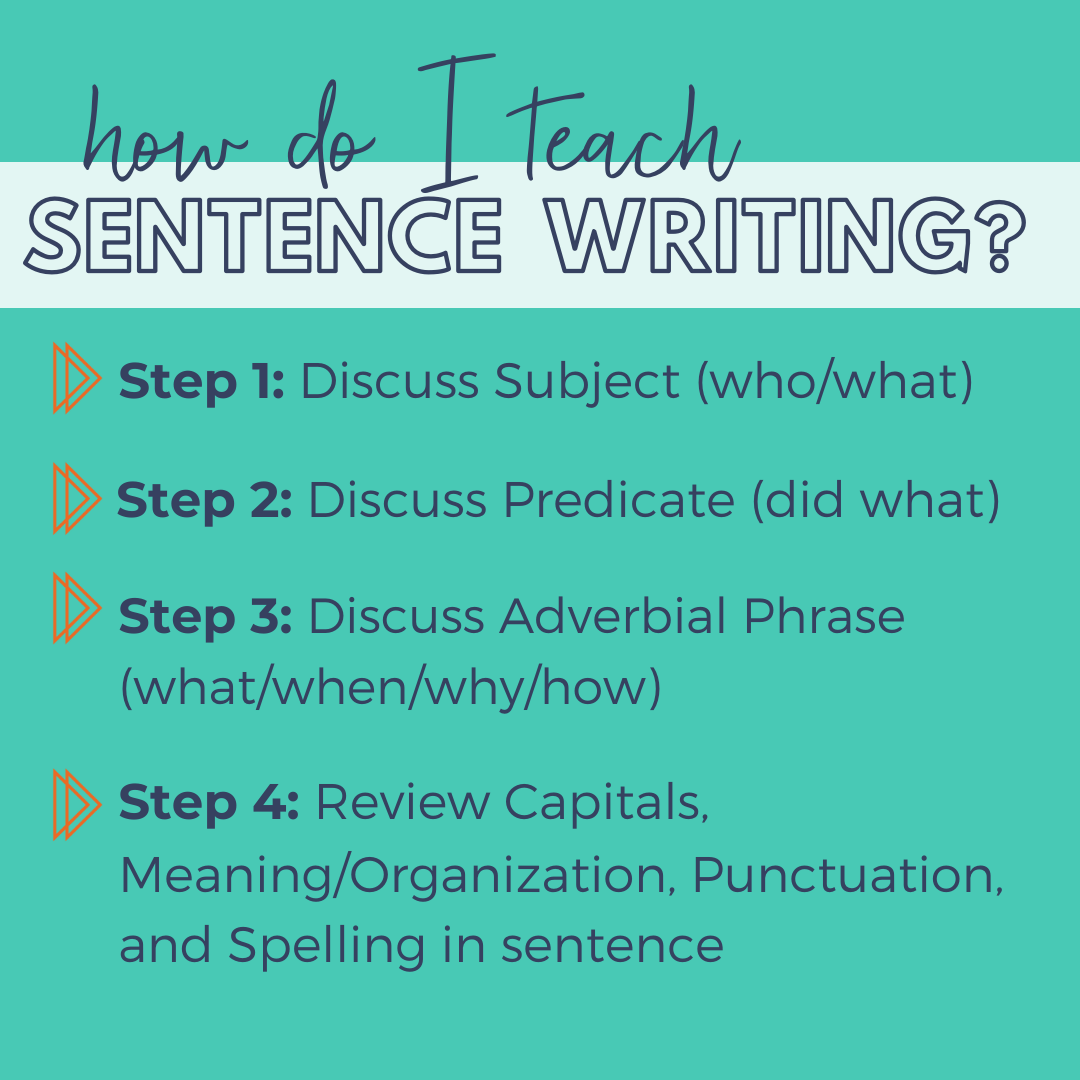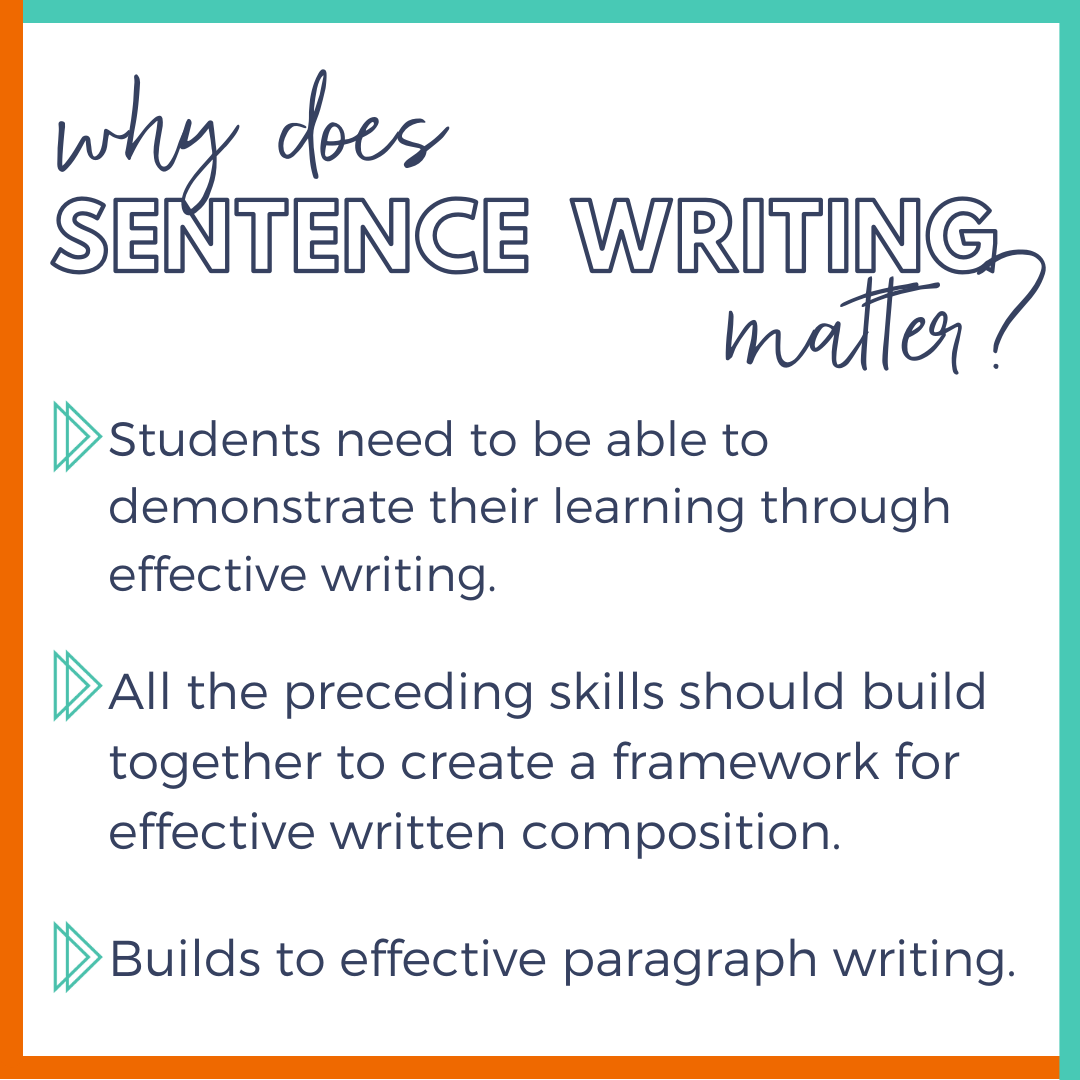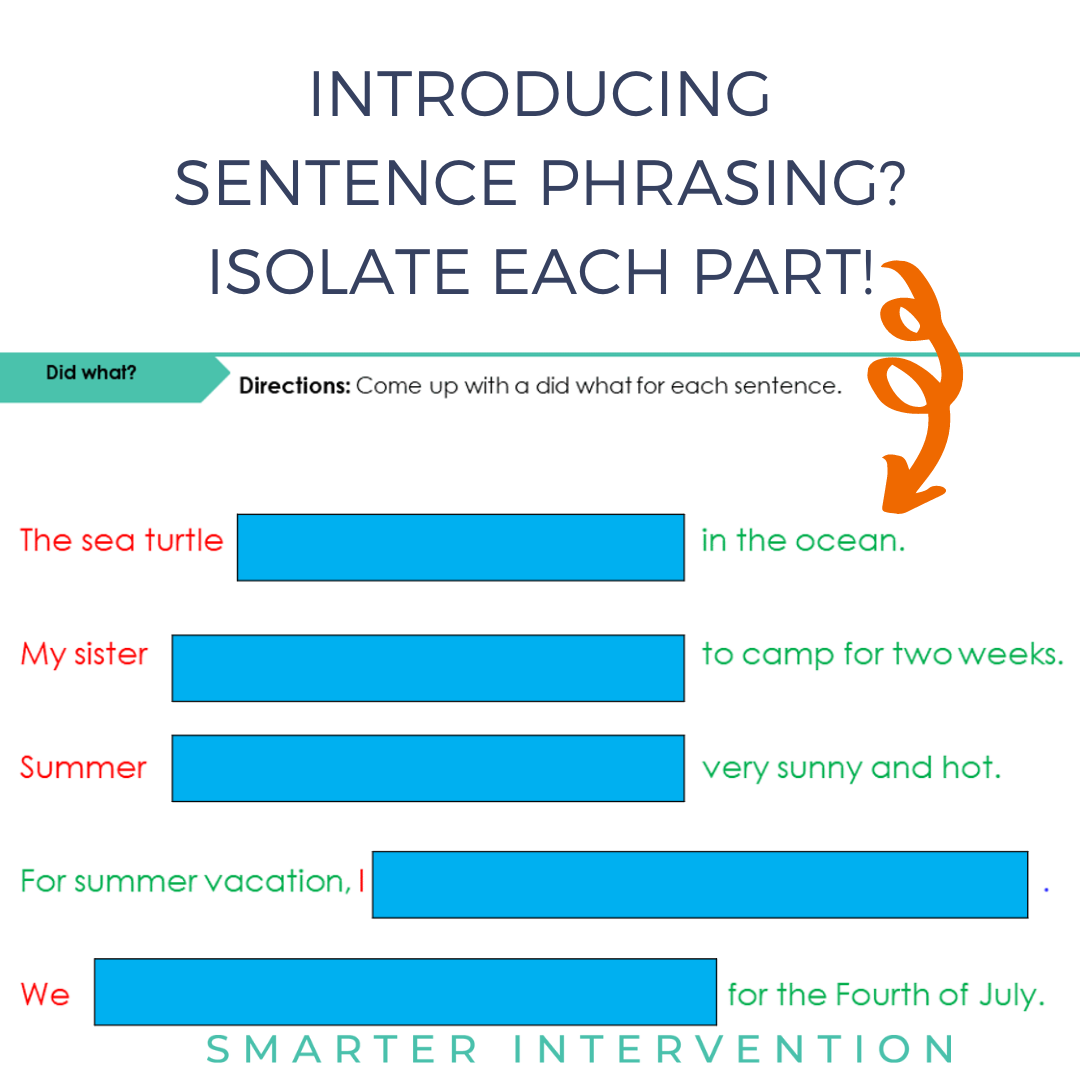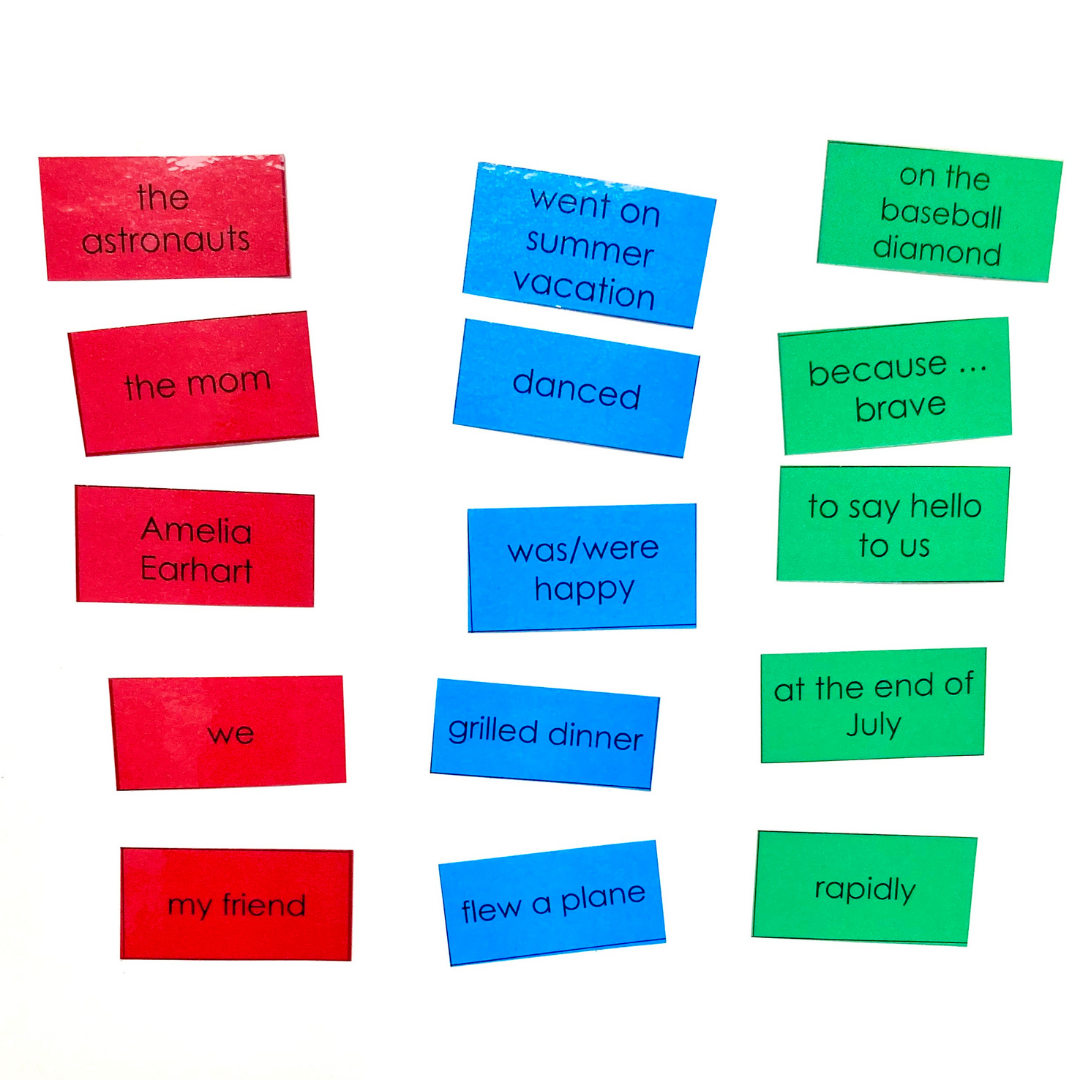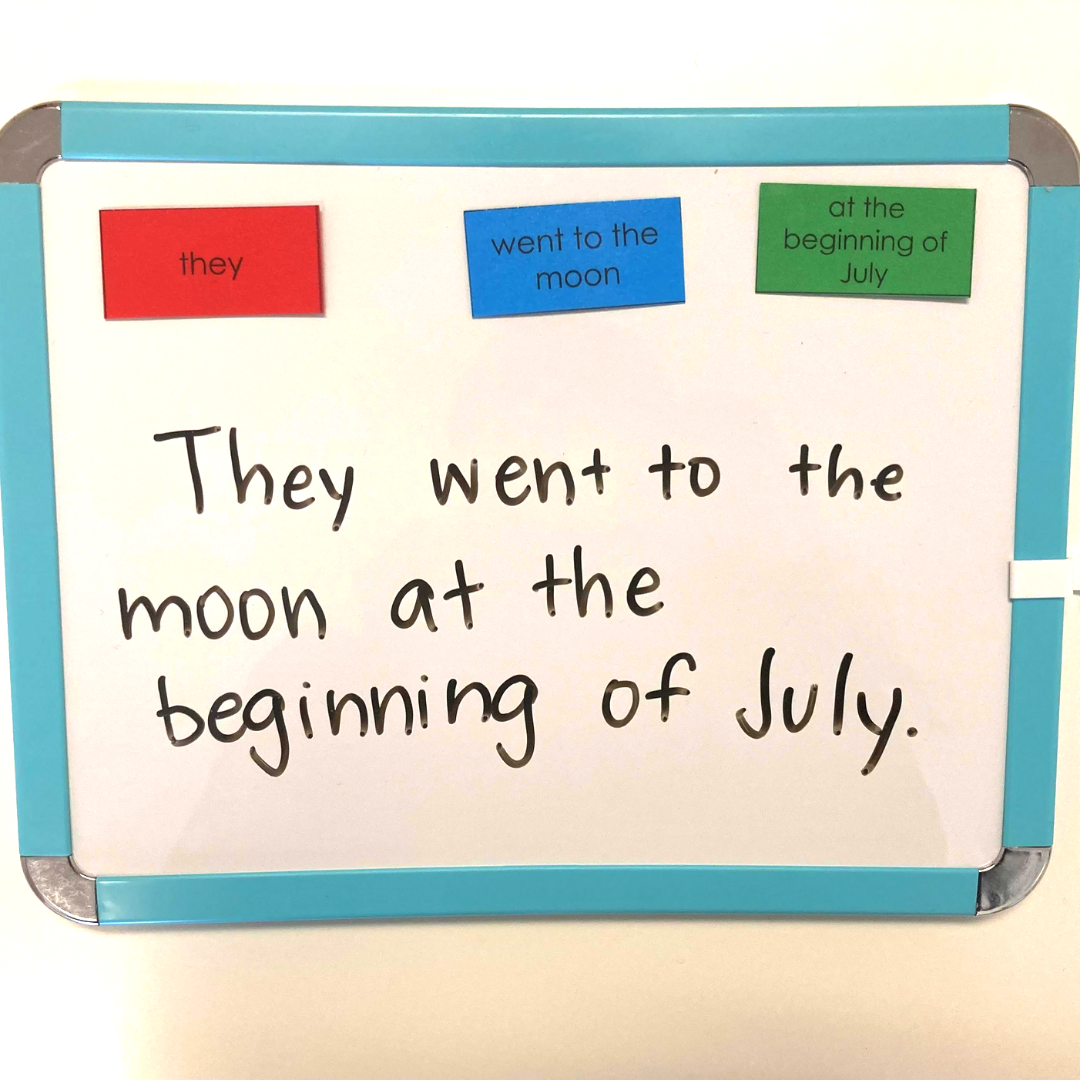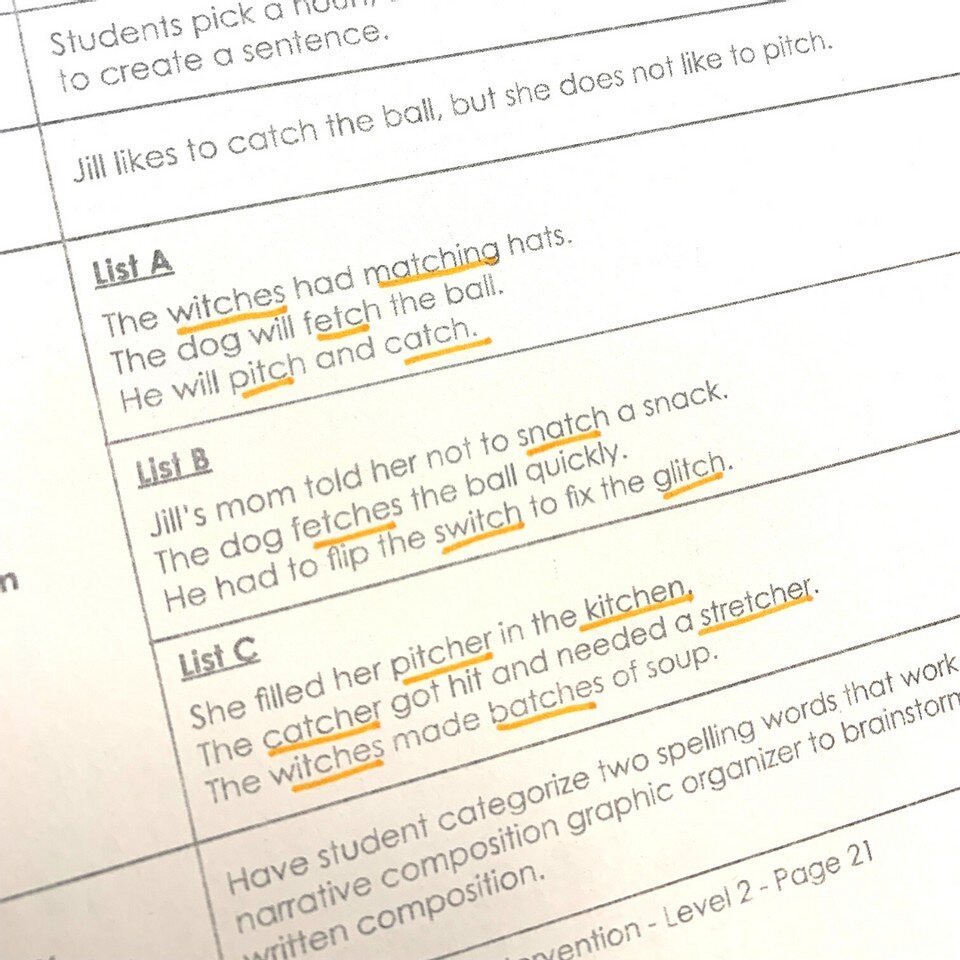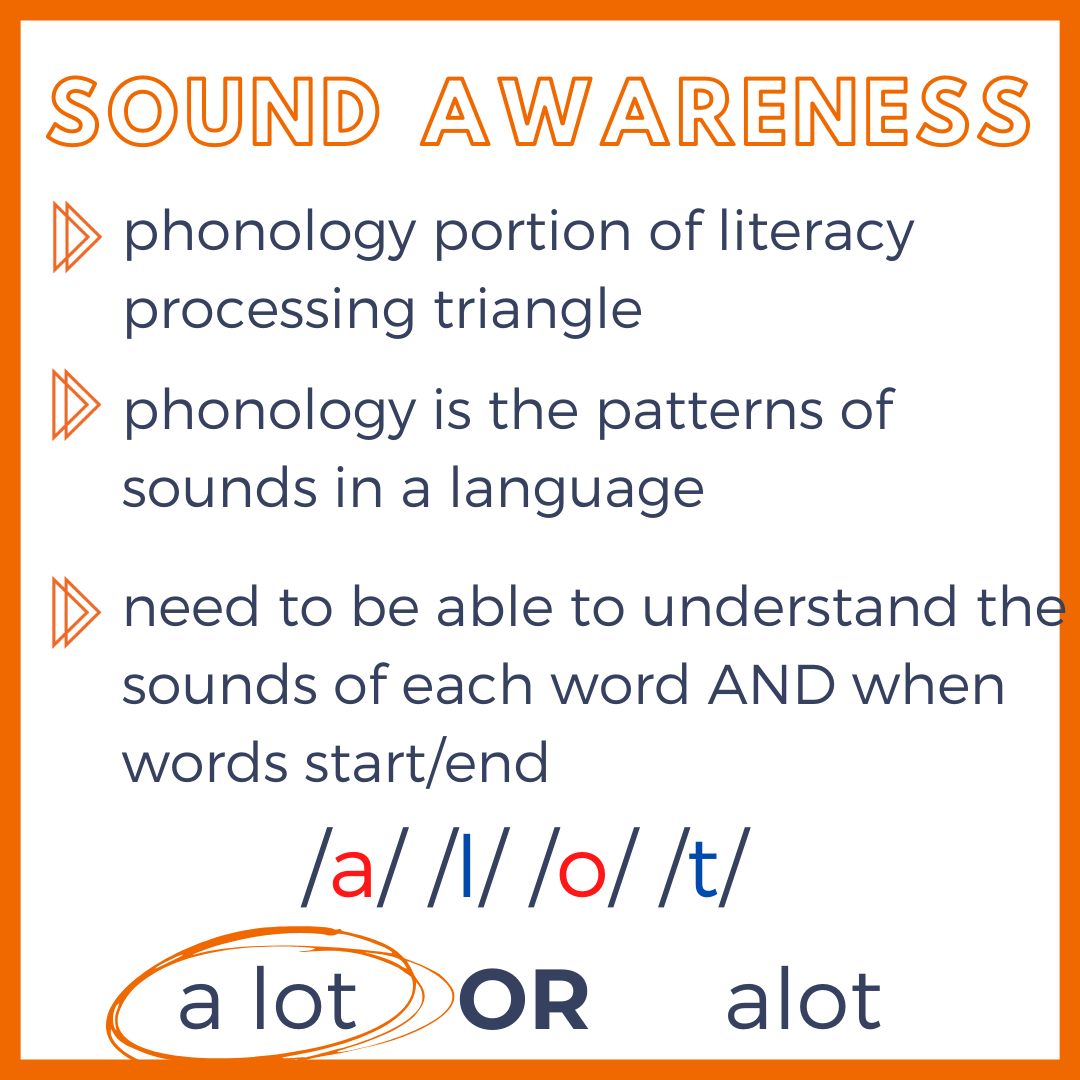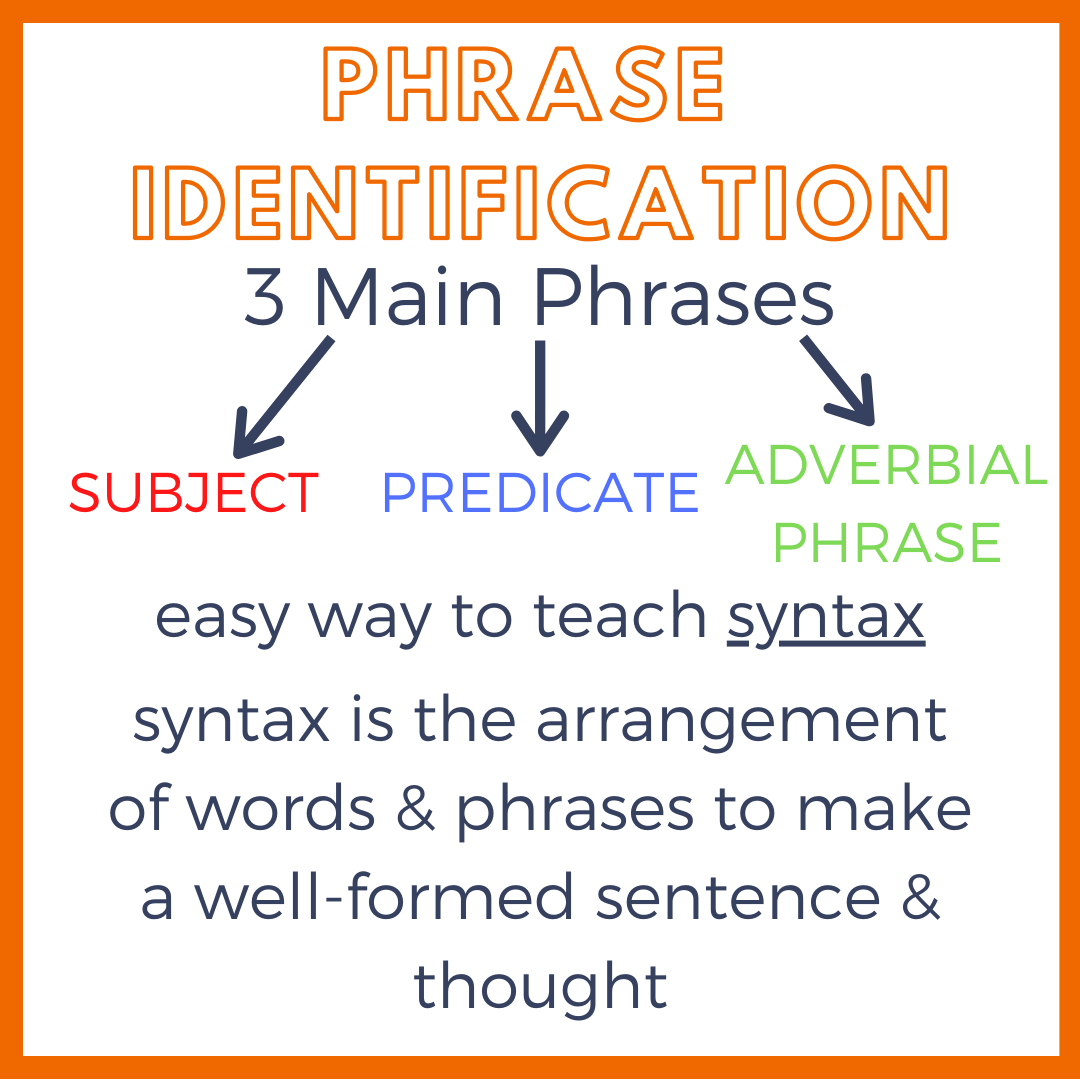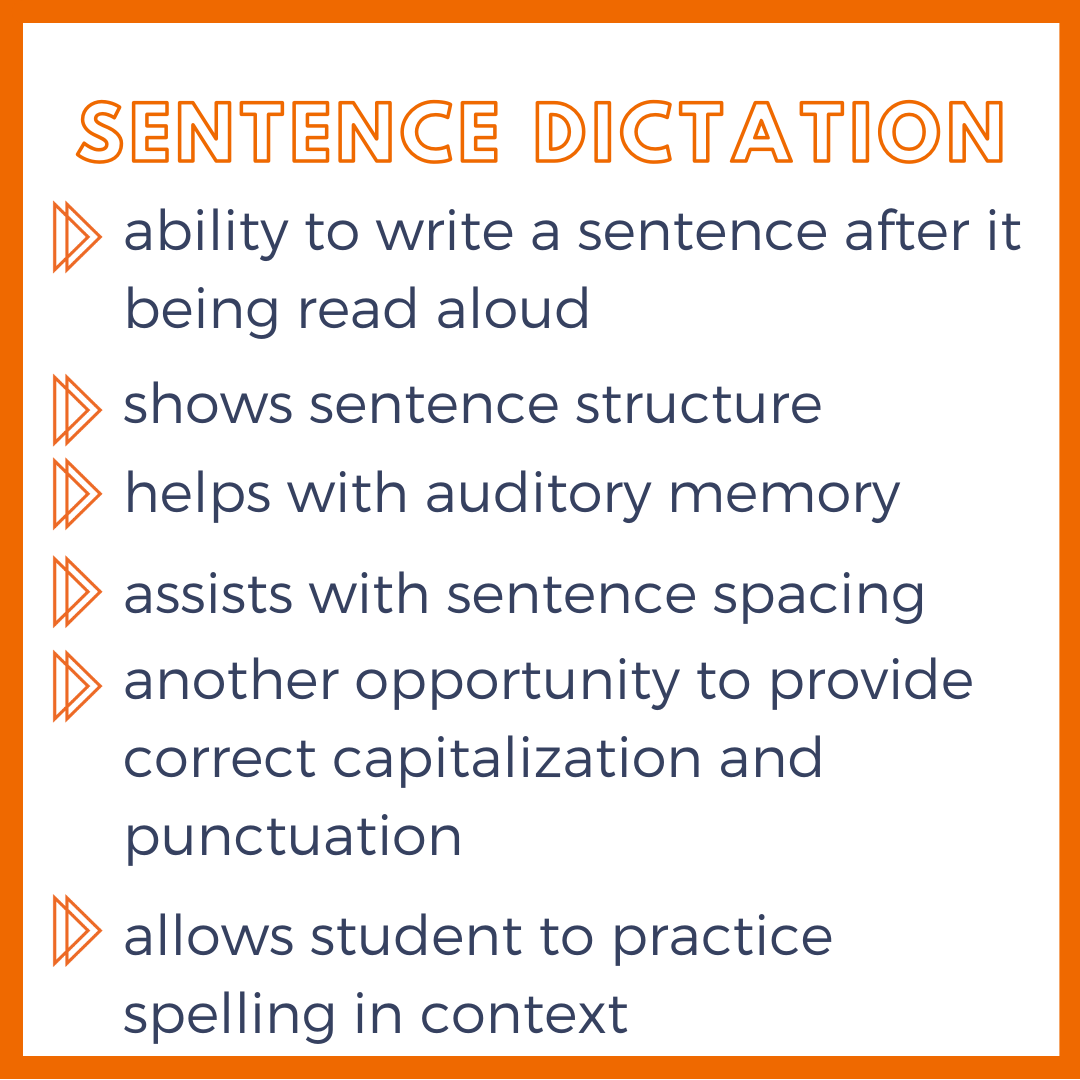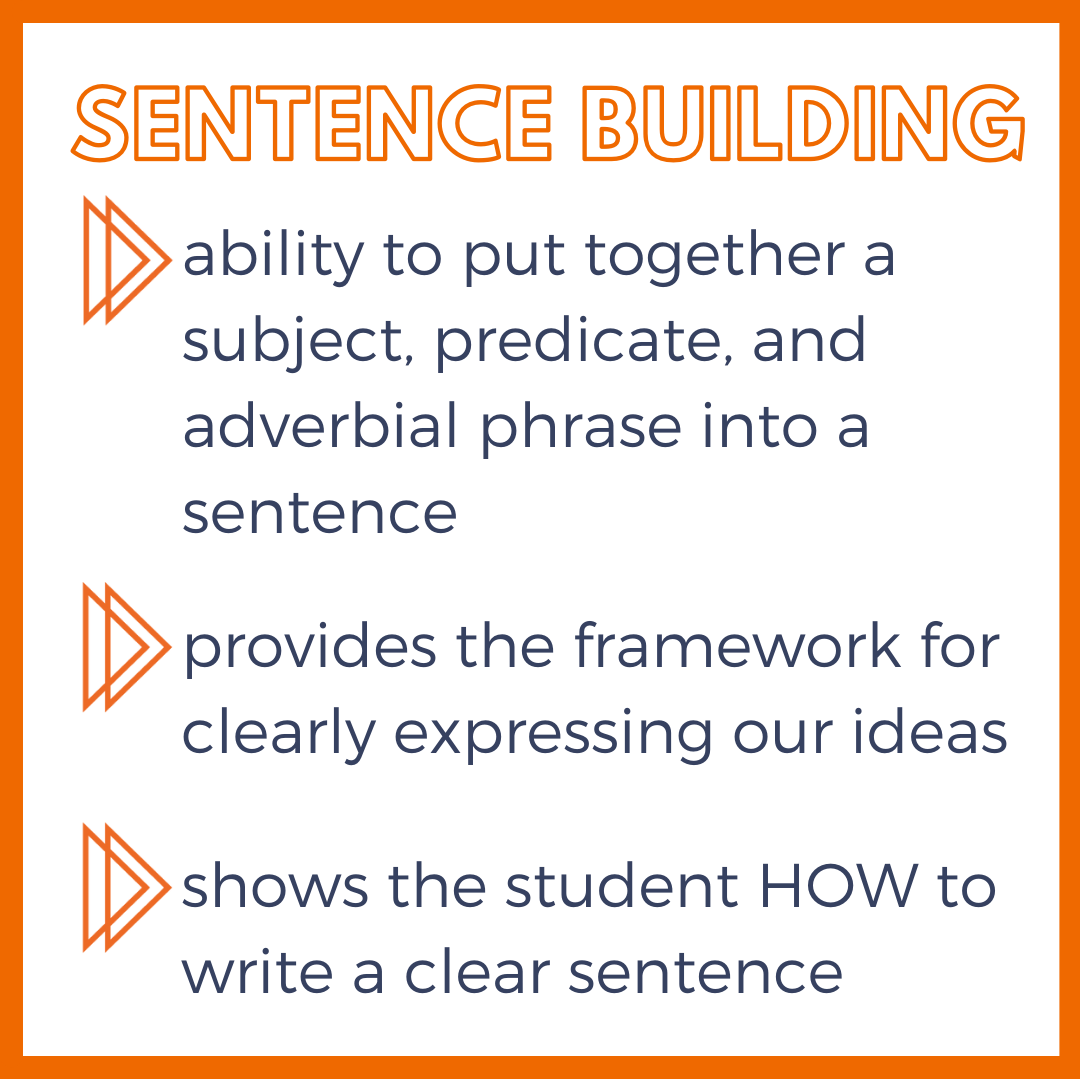How to Teach Sentence Level Writing using a Research-Based Approach
Hi Friend!
Today we are jumping into how to teach sentence-level writing using a research-based approach.
First things first -
Why focus on sentence-level writing instruction?
We need to be sure that students have the foundations and tools they need to write effectively because writing is the primary way in which we demonstrate what we know academically.
Writing is a complex process.
We must work through four levels of the writing process.
Word Level Structure (we talked more about this in our spelling blog you can read over here!)
Sentence Level Structure
Paragraph Structure
Overall Text Structure
Each of these structural levels has sets of rules we need students to understand in order to effectively communicate ideas.
So, let’s talk about sentence structure.
At the simplest level - sentences combine a student’s ability to write about/discuss a subject (the who/what), the predicate (did what), and the adverbial (why, what, when, where, how) in a grammatically-correct way. It also encompasses their self-monitoring skills and application of concepts like capitals, punctuation, and spelling.
There are 7 Steps to a SMARTER Research-Based Instruction Framework (we use the acronym SMARTER to help remember each of the key components!)
1 - Systematic Instruction
Sentence Writing instruction should follow a progression of skills.
At the most basic level, students need to have strong sound awareness to be able to write words, which then leads to writing phrases and then up to sentences.
It is important that as you work with students you target (more on that below!) your instruction appropriately to make sure students can complete every step in this progression.
2 - Multisensory Instruction
Sentence writing instruction should incorporate multiple senses wherever possible!
One of our favorite ways to make sentence writing multisensory is to make it visual! Our sentences are broken down into different parts. Our subject (the who/what in our sentence), the predicate (the thing the subject did), and the adverbial (the “bonus” information that tells us more about what happened, or where/when/why/how it happened).
By breaking these sentence components down with students, we are able to help them visually build sentences.
3 - Applied Instruction
Sentence-Level Writing Should be Applied to Paragraphs or Stories!
When students practice writing sentences, it is important that they are able to see how that sentence could then be applied to stories or paragraphs. Essentially, we need to take students’ abilities from the word and sentence level structure up to the higher-level structures discussed above.
If your students are capable of writing their own paragraphs - that’s a great next step! (Stay tuned for next week when we talk about paragraph writing in more detail!) If your students are not ready for a paragraph yet, you don’t have to skip this instruction!
A great way to expose your students to sentence expansion is to make it into a game. Have your student write their sentence. Then, you write a sentence that follows theirs, creating a story. Then, ask students to create their own sentence that continues the story (they can write or dictate this with you acting as a scribe). As you go, talk through the process of writing these sentences (who/what are you talking about? What “did whats” would make sense?) and how you can tie them all together.
4 - Research Behind Sentence Syntax Instruction
Research supports explicit teaching of sentence structure to build higher levels of writing ability.
Interestingly, there has been far less research devoted to effectively teaching writing, specifically at the word and structure level. In much the same way that “reading wars” exist, so do “grammar wars.” Depending on your education, you may or may not have been subjected to painful diagramming of sentences. Research studies and meta-analyses of these studies have been conducted in order to determine whether this high-level analysis and formal grammar instruction helps support students’ writing ability.
“The results show that there is little evidence to indicate that the teaching of formal grammar is effective; and that teaching sentence-combining has a more positive effect.”
- Andrews, R., Torgerson, C., Beverton, S., Freeman, A., Locke, T., Low, G., Robinson, A. and Zhu, D. (2006), The effect of grammar teaching on writing development. British Educational Research Journal, 32: 39-55.
Essentially, best practices indicate that we need to start with the process in which we work up from the word level to the sentence level but that we don’t need to get into the nitty-gritty weeds and details in order to help our students become effective writers.
So, why is sentence combining so effective?
Based on a study conducted by Saddler and Graham…
They have an opportunity to see what an effective sentence looks like (this is why sentence dictation is also a critical component of effective instruction); they can understand what choices are available to create a grammatically correct sentence.
Once the process of sentence formation and then reformation (e.g., “The car was red.” “The car was fast.” becomes “The red car was fast.” or “The car was red and fast.”) becomes automatic, fewer cognitive resources need to be used at the sentence structure level allowing more cognitive resources to be allocated toward higher-level composition.
Gains in syntactical (structural) fluency lead to better writing (which is why sentence building in which content not for the sentence is not provided is a critical component in effective instruction).
Saddler, B. & Graham, S. (2005), The Effects of Peer-Assisted Sentence-Combining Instruction on the Writing Performance of More and Less Skilled Young Writers. Journal of Educational Psychology, 97: 33-54.
5 - Targeted Instruction
You target specific sentence-level writing skills by understanding where your students’ abilities are and differentiating accordingly.
A great way to target your sentence-level writing is to differentiate your sentences based on your students' abilities!
In one class, you are going to have students who really struggle with sentences and others who can use something a bit more challenging. Having differentiated lists that all target the same phonogram pattern is a great way to keep the lesson cohesive but differentiate it for your students!
6 - Explicit Instruction
The biggest hallmark of research-based instruction is that the instruction must be taught explicitly, meaning that we don’t assume students have prior knowledge of foundational reading and spelling concepts just because of their age or reading/spelling ability. When we teach sentence-level writing, the explicit skills we want to target include the progression of skills that support spelling and writing.
Explicit Skills to Support Sentence-Level Writing
Include sound-symbol knowledge, spelling, phrase identification, sentence dictation (when a student is asked to write a sentence after they hear it), sentence combining, sentence building, and editing skills.
When we think of explicit instruction, we also want to make sure that students are explicitly taught things like…
when to use a capital letter
when to use which punctuation mark
how to use morphological patterns to enhance a sentence/create a grammatically correct sentence
how to self-monitor and edit for these things.
7 - Realistic Instruction
Do what you can with what you have, where you are.
Now obviously there is A LOT that goes into research-based instruction for sentence-level writing, but again, it does not have to be difficult. One of the best things you can do is to start thinking about where you can incorporate these activities into what you’re already doing. For example, can they pick two of their spelling words to write sentences for? The best instruction is the instruction you can actually deliver and keep up with, without burning yourself out!!!
If you’re interested in learning more about how you can align your writing instruction with the Science of Reading, check out the 5ccl Activity Library. This library provides access to hundreds of SOR-aligned resources that help target instruction for all 5 core components of literacy + writing! Click below to check it out.

